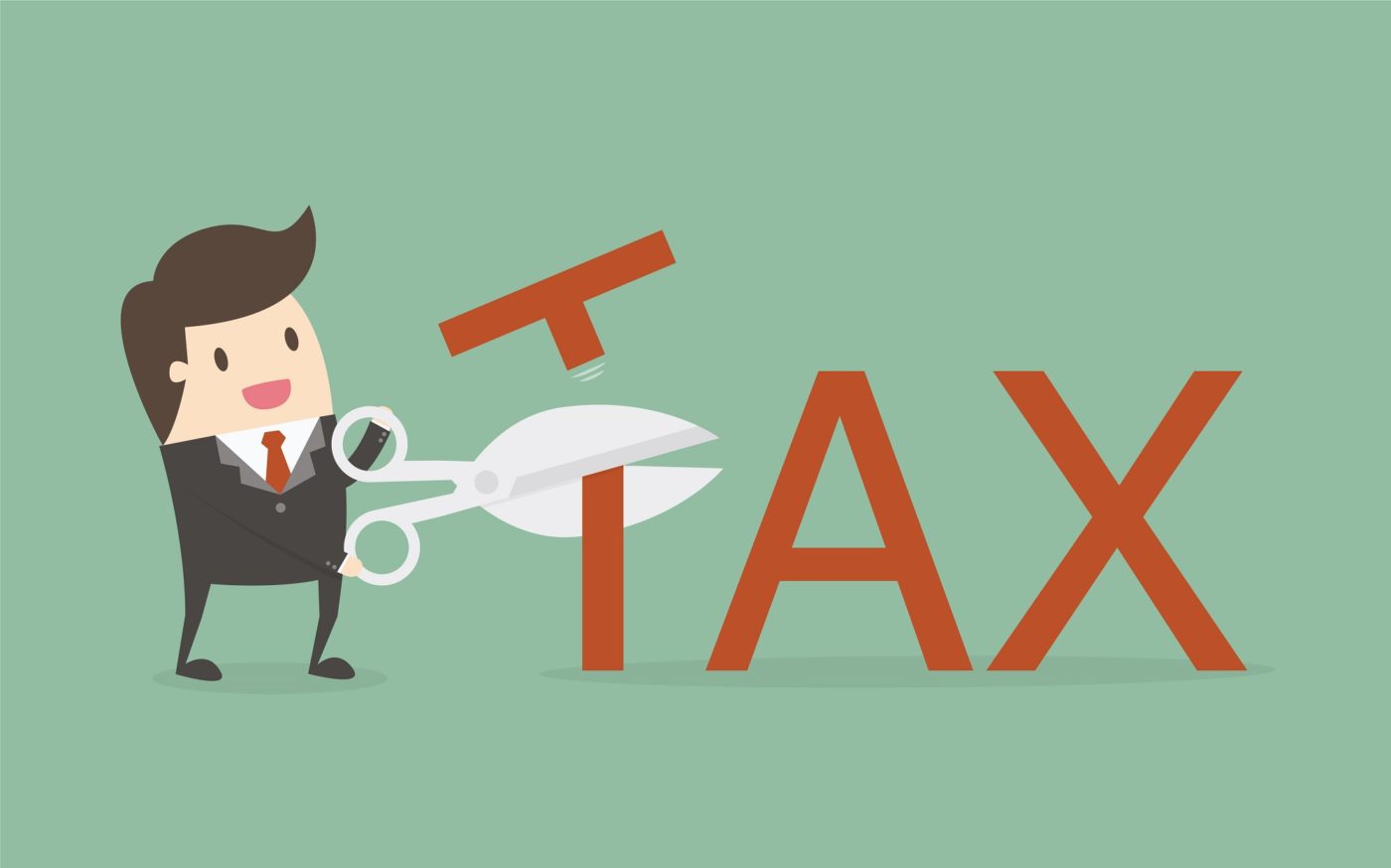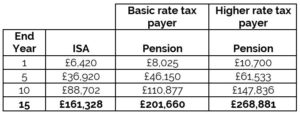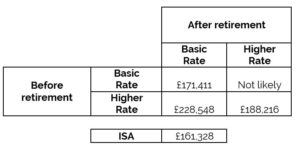Is an ISA Or A Pension The Best Way To Reduce Your Tax Bill?

ISAs and pensions are the two most popular tax saving vehicles for investors. However, they both achieve this in different ways and have different pros and cons. In this post we will look at whether an ISA or a pension is the best way to reduce your tax bill.
- ISA contributions have no up front tax relief on the money you put in …. but the withdrawals are tax free.
- Pensions withdrawals are taxed at your marginal rate …. but the contributions receive tax relief up front.
Although they may appear to have a similar outcome at first glance, pensions are a much better tax shelter, especially for higher rate tax payers. Here are three reasons why:
- Pensions offer you a 25% tax free lump sum. Not all of your pension withdrawals are taxed as you can take one quarter as a tax free lump sum.
- Pensions allow you to make use of your personal allowance. Some of your pension income may be coverer by your personal allowance meaning it is not taxed at all.
- You are likely to pay less tax in retirement. Most higher rate tax payers will fall into the basic rate band in retirement. This means you would receive 40% tax relief on the money you put in but will pay no more than 20% tax on the money you take out.
Thanks to these three factors it is quite possible that a pension will generate considerably more after tax income than an ISA.
Of course tax is not the only consideration you should bear in mind. ISAs have a major benefit over pensions and that is flexibility. You can access your ISA whenever you wish. Pension savers on the other hand can only access their money when they reach age 55, and this age is likely to increase.
Worked Example: A Comparison Between ISAs and Pensions
To show you how significant the differences can be we will consider three different scenarios in this worked example – that of an ISA saver, a basic tax rate pension savr and a higher tax rate pension saver.
We will assume each invests £6,000 a year, for 15 years, and that we see investment growth of 5% per annum.
(Note: the higher rate tax payer will pay in £8,000 but receive a £2,000 tax rebate, an effective payment of £6,000)
Here is how their respective savings will accumulate over the years:

As you can see the pension savers will have larger portfolios after 15 years. However what happens when a tax free lump sum is taken, and the marginal rate of income tax is applied to the withdrawals?
We will assume that the entire pension is taxed after retirement at the 20% or 40% rate. Of course in practice retirees have a personal allowance and most higher rate tax payers have a proportion of pension income falling into lower rate tax. But this still illustrates the point nicely:

Conclusions:
The ISA saver will be able to withdraw their £161,328 tax free. However both pension savers will be able to withdraw more, with both the basic rate and higher rate tax payers benefitting even if they stay in the same tax bracket after retirement. The real winner is the higher rate tax payer who becomes a basic rate tax payer in retirement, and who comes away over 40% better off than the ISA saver!
So, although the ISA has much more flexibility, a pension is clearly the best vehicle to use in order to maximise your future income.
Of course, at the end of the day the choice will come down to your personal situation and future income requirements. Please contact Carlile Alexander Private Wealth for individual expert advice.
Useful Information:
Contribution Levels for the 2018/19 Tax Year
It is important to bear in mind that there are contribution levels for both ISAs and pensions. Even higher rate tax payers might not be able to claim higher rate tax relief on all of their contributions if they don’t have enough relevant earnings.
ISAs: £20,000 per person per tax year.
Pensions: You can contribute your gross annual salary up to a maximum of £40,000 per year. The carry-forward rules may allow a contribution of up to £160,000 for previously unused tax years. The maximum contribution that you can make and still receive full higher rate tax relief is likely to be lower than this so please speak to us about your situation. Those earning over £150,000 have a reduced pension allowance which tapers down to £10,000.

